Erotic Pompeii Paints on Brothel and Houses

Brothel + Taverns + Houses + Thermal Baths + Roman erotic art + Sculptures + Pompeii Movies
Pompeii Erotic Art
Pompeii Erotic Art & Brothel Sex Paintings: Pompeii is one of the most famous of the ancient Roman cities. It was preserved by the eruption of Vesuvius in AD 79.
The streets of this city like nearby Herculaneum are literally covered with penis sculptures, symbols of luck and prosperity. In Pompeii there is a mural of the god Mercury that appears with a large erect penis. New images of a brothel excavated within Pompeii give a new insight into his sexual activities.
Pompeii sex murals
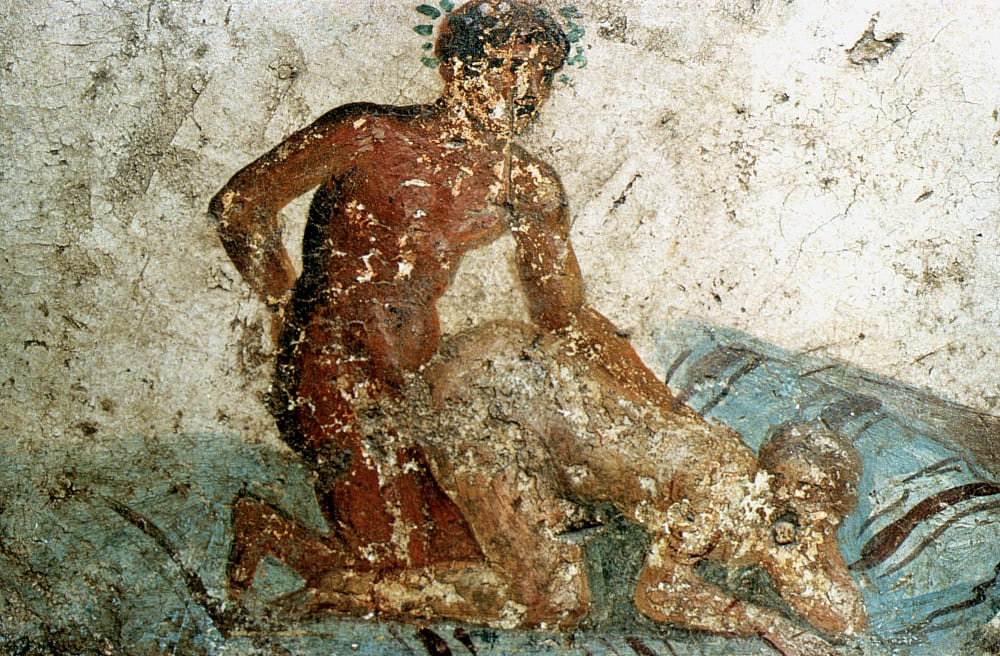
How Many Brothels were there in Pompeii?
Almost 30 brothels. Much of the walls of brothels in Pompeii depict sexual acts that archaeologists think were advertisements for their clients. Only the wealthiest citizens of Pompeii could afford to spend their time here. Some of the clients seem to have recorded graffiti commenting on their experiences. The only known brothel in the city was five stories high and equipped with a balcony from which prostitutes called their customers as they passed by on the street.
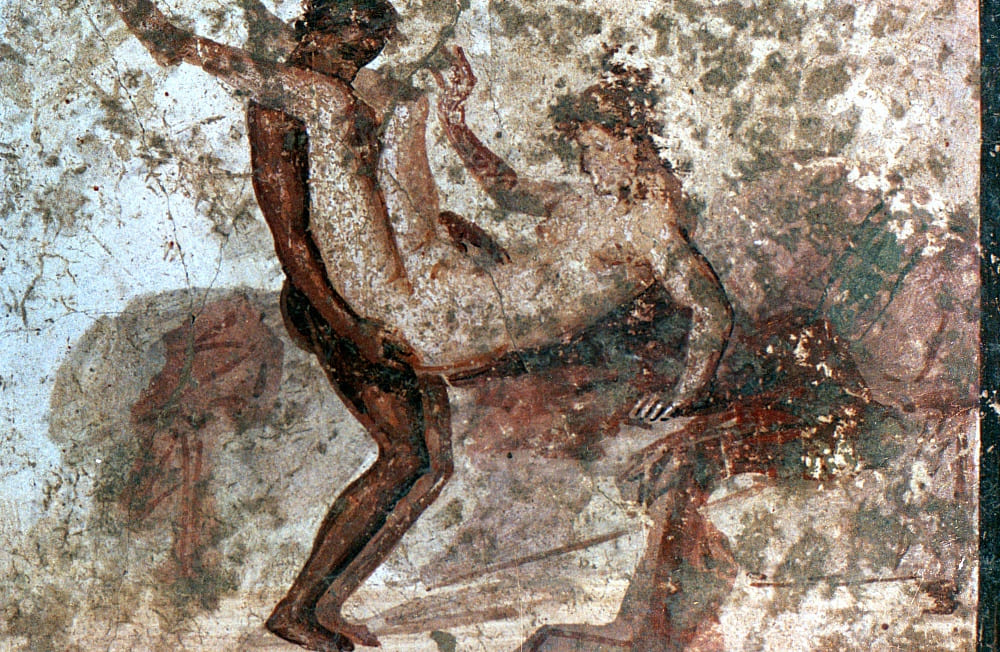
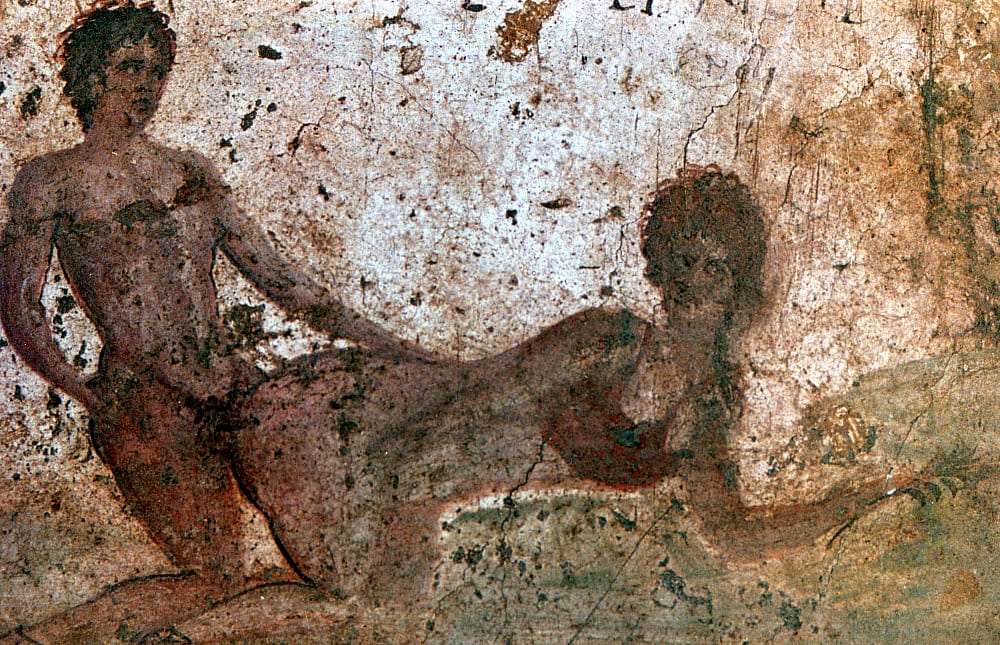
What were the sexual paintings in the brothels of Pompeii like?
There were male and female prostitutes working in the Pompeii Brothel, and it is thought that each had to register officially and also pay taxes. Despite the fact that prostitution was legal in Pompeii, most of the women who worked there were slaves.The wall paintings of the brothels of Pompeii show us the sex life of the ancient Romans
House of Julia Felix in Pompeii
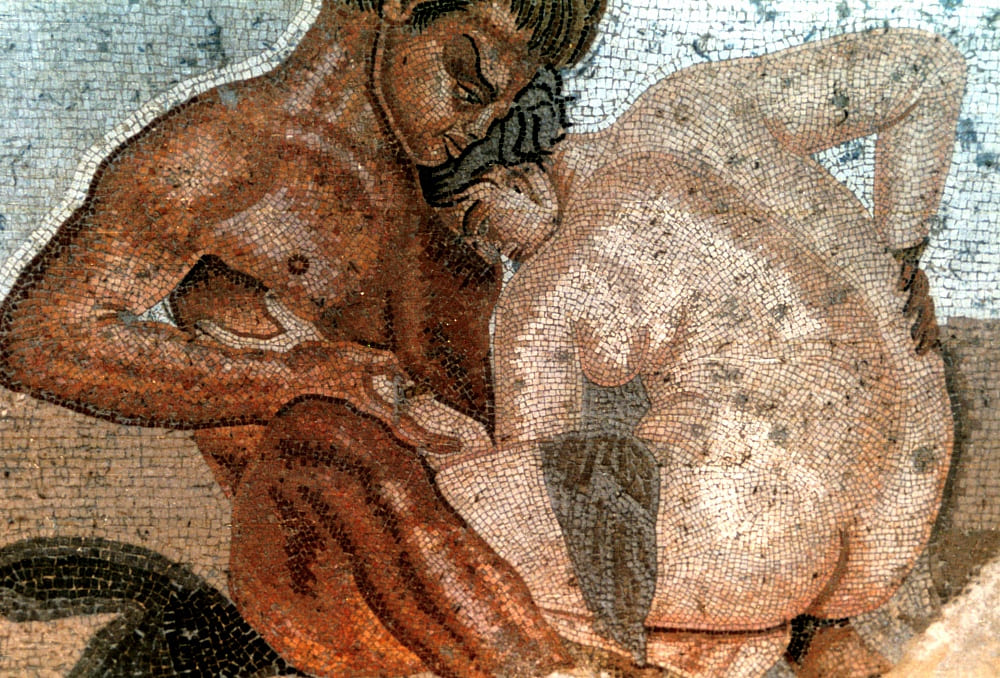
Pyramus and Thisbe, House of Loreius Tiburtinus
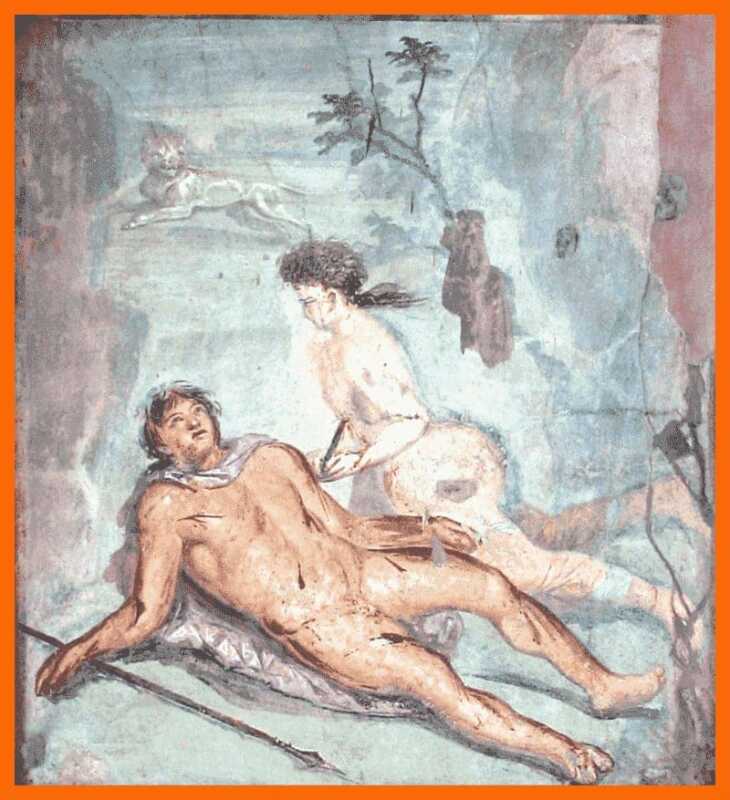
What are the 4 Roman painting styles?
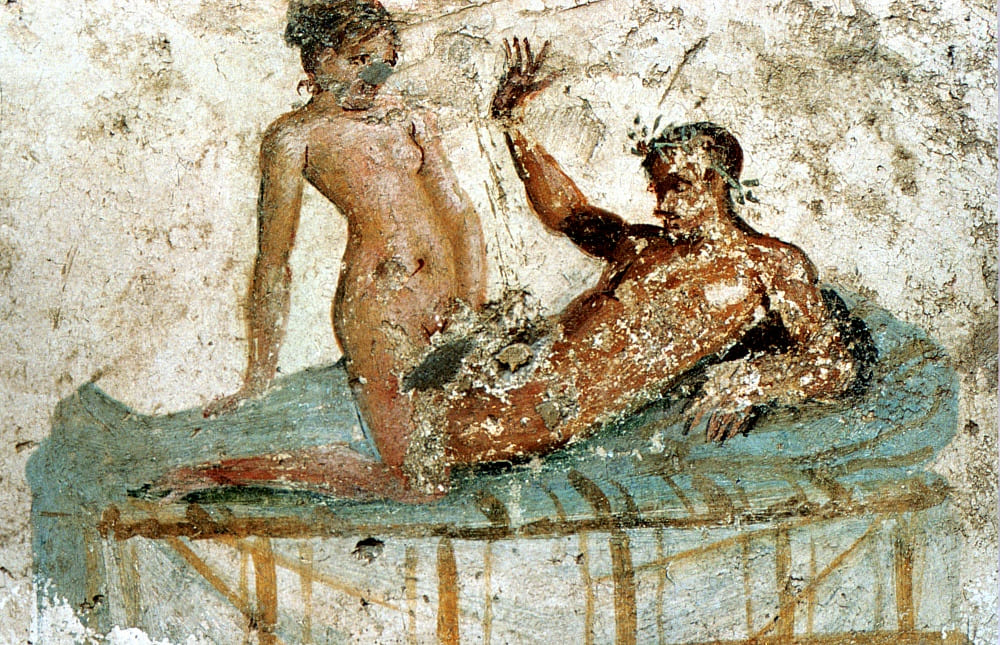
Only Married Men – Pompeii sex murals
Married men were allowed to be with any woman except the wives of other men. Married women were prohibited from having sex with anyone other than their husband.
The brothel was not a very pleasant place to work. It was very small, cold, wet, and the rooms are quite dark and uncomfortable. Most of the murals show classic sexual positions, some not so much. They also present images of anal sex, blow job and sexual threesomes
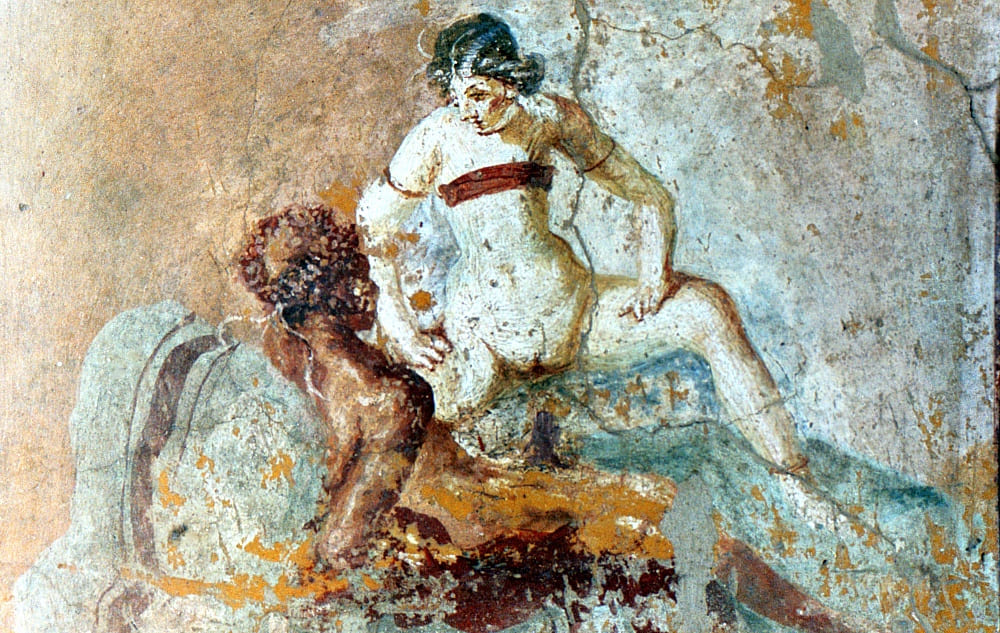
What type of artworks are found at Pompeii?
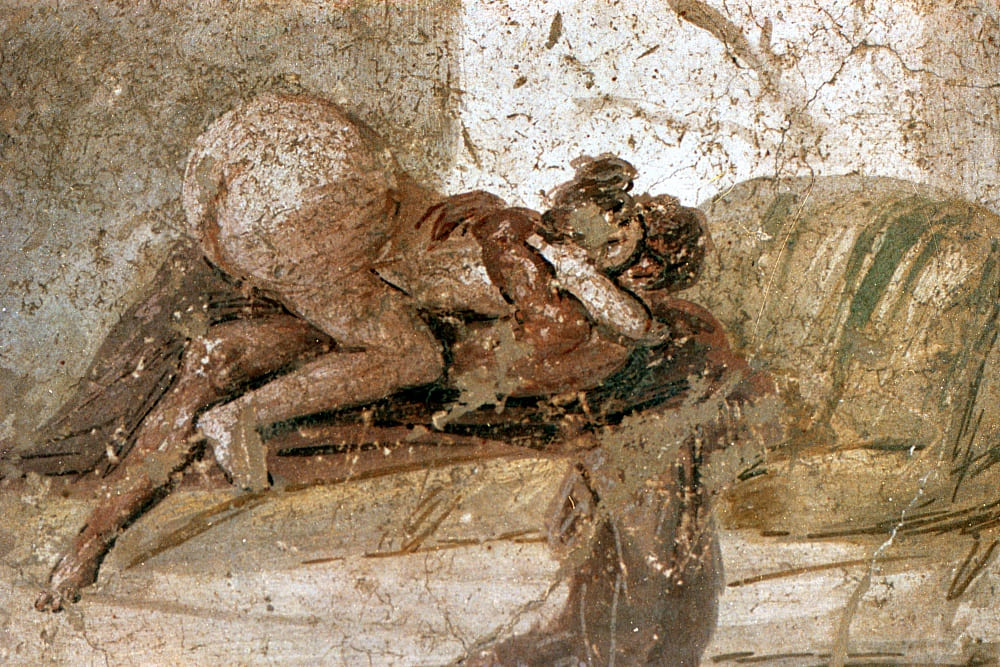
What is a Frescoe in Pompeii?
What are the frescoes showing in Pompeii?
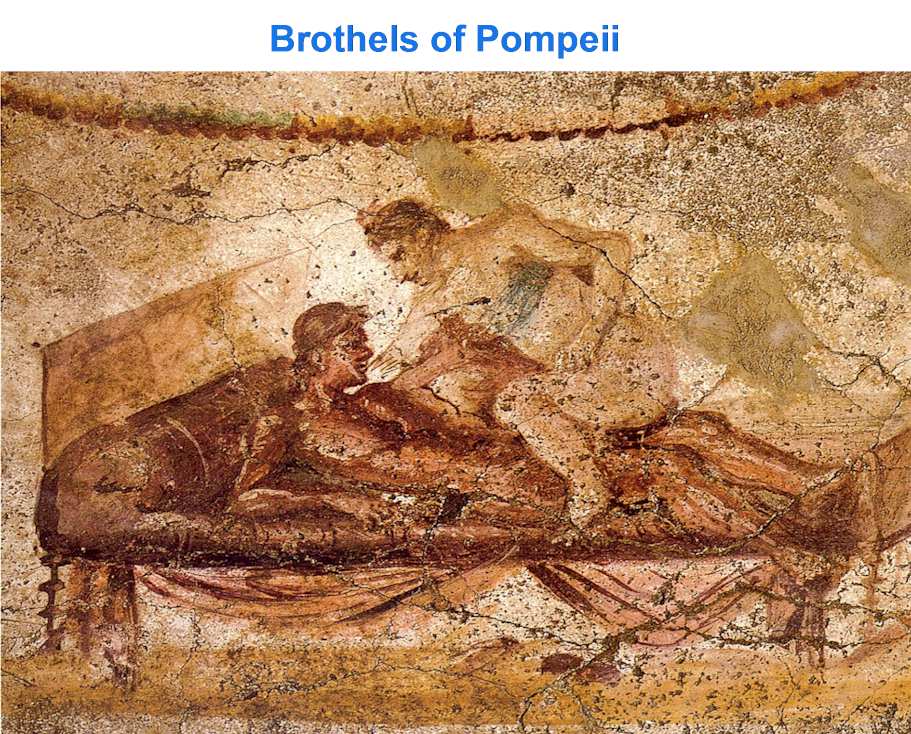

Where were the erotic paintings located in Pompeii?
Erotic paintings in pompeii erotic in pompeii were located in brothels or lupanares, thermal baths, Taverns, Thermopolium and private houses
Erotic paintings in Brothels
Vicola de Lupanare. This old brothel is the most visited building in the whole of Pompeii, it was discovered in the 19th century and various restorations have been carried out, until its final reopening in 2006. The characteristics of this building make us think that it was built exclusively as a place of prostitution.
General view of Vicola de Lupanare – Erotic Art of Pompeii
The lupanar “Vicola del Lupanare”, is located in the oldest area of the city is located between the Forum, the market and Via Stabiana. and At the intersection of two secondary streets, very close to where the baths, taverns and inns were located. It is believed that it was built in the year 72, a few years before the eruption of Vesuvius.
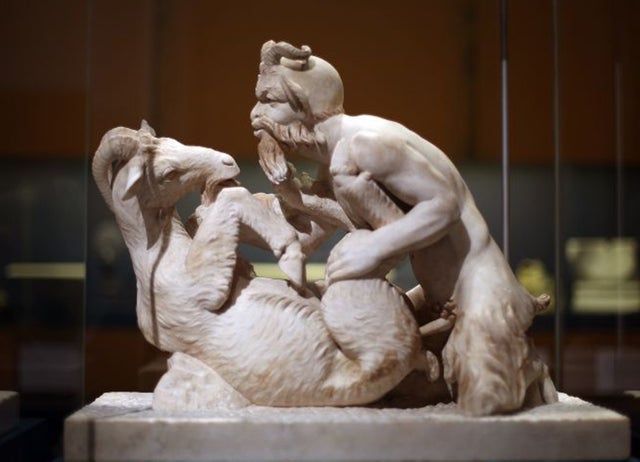
It is a two-storey building, L-shaped, and it seeks the maximum rationalization of space. At the main entrance there is a biphalic Priapus whose purpose would be to scare away evil spirits. At the end of the corridor, behind a wall, was a latrine; place where a wooden staircase starts, towards the first floor.
The interior of the brothel
The ground floor had two entrances that gave access to the central corridor where five small rooms were opened, along this corridor we can see pornographic frescoes on the lintel of each cell, where different positions and sexual games are seen. The purpose of these pornographic squares, apart from the logical arousal of the client, it has been speculated that it could also indicate the specialty of each prostitute.
The rooms were quite small, without ventilation and where the bed stands out, attached to the brick wall, on which the mattress and pillow would be placed. These rooms would also have a small table and some type of nightlight, as well as a jug of water for personal hygiene.
Slave Market in Ancient Rome (c. 1884), Hermitage Museum
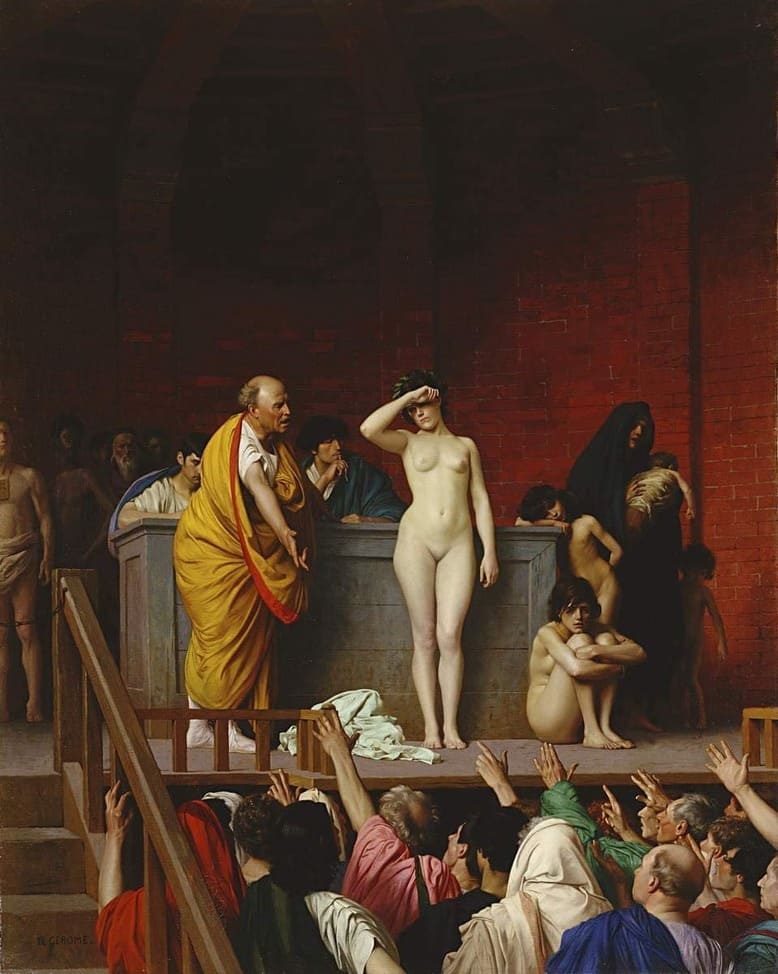
Upper floor of the Ancient brothel
There are also two levels, the ground floor for the poor and the first floor for the rich. Access to these spaces was independent, so that the two types of clients of Pompeii prostitutes did not coincide.
The upper floor has a large balcony that runs along the entire double façade, on this floor we find 5 new rooms, a little more spacious than those on the ground floor, and open to the continuous balcony, so they were brighter and better ventilated . It has been speculated that these rooms were reserved for the richest clients, although the absence of erotic paintings suggests that they could be the private rooms of prostitutes
Each of the first floor rooms opened directly onto the balcony. Why have this communication between balcony and room? In my opinion this is due to the possibility of rich clients choosing a prostitute. Wealthy pedestrians, who were attracted by the different prostitutes, could choose “the one they liked the most”, as a showcase. If client and prostitute agreed to a sexual act, she would need direct access to her room to meet him.
Erotic paintings in Thermal Baths
The suburban hot springs were a private building, where men and women shared a dressing room (apodyterium), keeping their clothing and sandals in the lockers. 16 small frescoes are displayed on each wardrobe with erotic scenes, in crescendo, increasingly sexual and lascivious.

Its function was surely to remember the place where the garments were left, similar to those of the spintriae. There has also been speculation about the possibility that prostitution services were offered inside the hot springs.
Erotic paintings in Taverns
Some part of the house could also be used as a tavern. Many of these taverns were characterized by also offering prostitution services through the same waitress or a slave in a secluded room.
Erotic paintings could also have an ironic or humorous component, especially those displayed in public places, such as taverns. In Pompeii there are two examples:
- Via de Mercurio A pair of jugglers perform sex while trying to drink and eat at the same time. Fresco currently missing.
- Salvius : Where a man and a woman appear kissing with a sign that says “I don’t want a kiss from Myrtale”, the famous Pompeii fella. (Nolo cum Myrtale!)
Erotic paintings in Private Houses
It may be that some of these houses have also practiced prostitution, where the lord would get an extra profit from some of his slaves, as epigraphically collected in the House of the Vettii
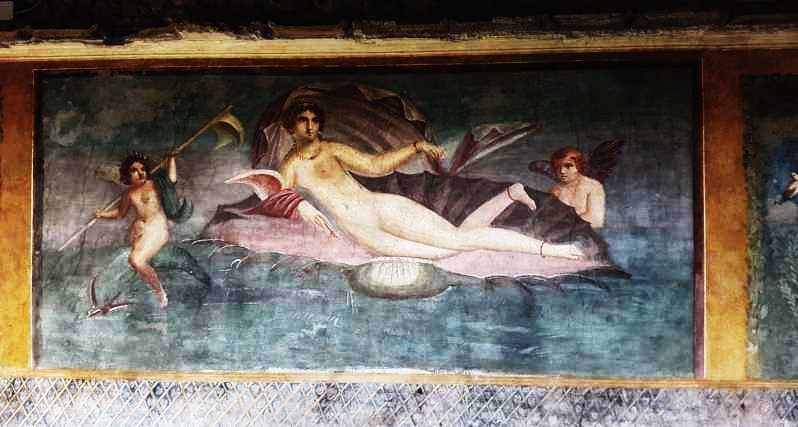
Inside private houses we find erotic paintings reserved rooms, which were rooms dedicated to pleasure. It is a space reserved by the lord of the town for his sexual relations with his slaves or for his private parties.
As examples of this type of room for erotic games we can mention the Villa Carmiano, located in Gragnano, or the Casa del Centenario in Pompeii.
Cunnilingus Picture in Pompeii
One of the least mentioned practices in classical antiquity is cunnilingus, surely considered one of the most humiliating and unnatural practices that could be given. So much so, that its mentions or graphic representations have been almost non-existent.
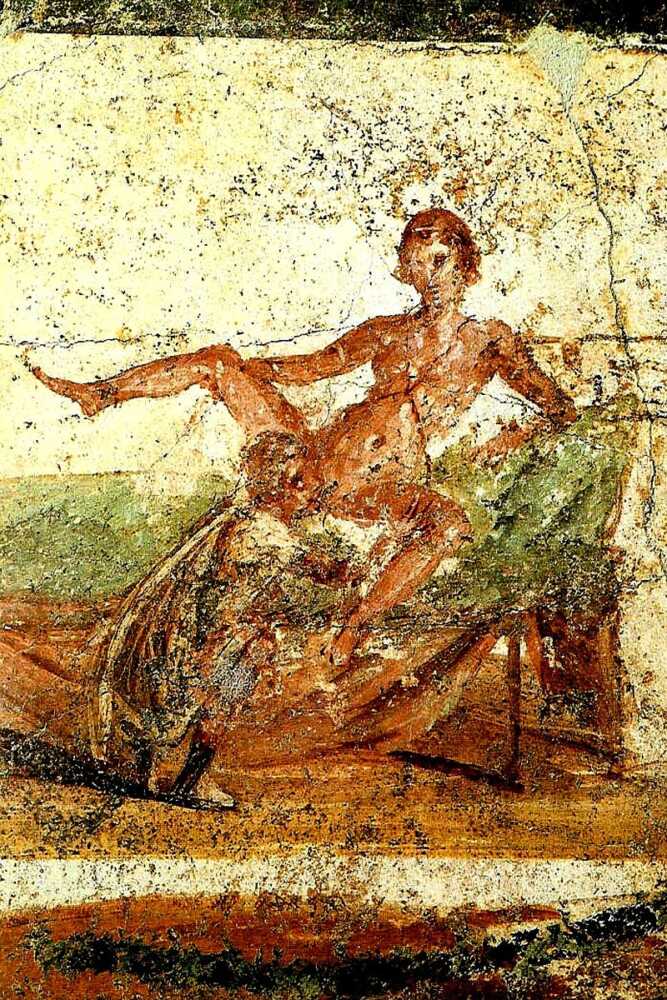
Only one image of cunnilungus has been documented with some rigor. It is a wall painting located in the suburban baths of Pompeii, to which we will soon dedicate a particular review.
How were the Marriage Relations in Ancient Rome?
Marriage relations in the Ancient Roman world was a contract for economic interests. It was a mechanism for producing legitimate children who would inherit their parents’ property and status. Sexual pleasure was sought in places outside the home where many of the practices that were carried out were considered immodest for a Roman matron.

Ancient Roman Prostitutes and Laws
Ancient Roman laws defined prostitutes as “people who openly make money with their bodies”. Prostitution was considered a social and necessary good. Thanks to this we know a lot about the types of prostitutes, their activities and even the prices of prostitutes and prostitutes, since there was also the prostitution of young men dedicated to a female and homosexual audience. Prostitution in the Roman Empire was exercised normally in specific streets, public baths or in various tabernae. The Ancient Roman brothels were organized as the place par excellence of prostitution.
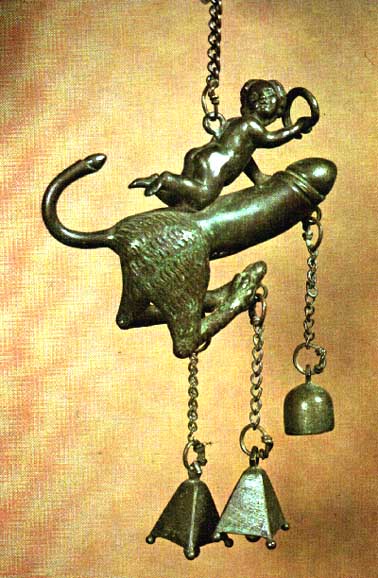
How Many brothels were there in Ancient Rome?
In the 4th century AD in the City of Rome, more than 49 places of prostitution were officially registered. In neighborhoods like Subura or Trastevere there were brothels for common people, while the Aventino neighborhood housed brothels with a higher economic level.
These Old Roman Brothels were easily identifiable. There were signs that indicated the direction to the nearest brothel, either phalluses engraved on the floor pavement or vertical signs. In addition, the brothels had a huge phallus painted vermilion red, which served as a knocker on the door. Also at night, the Ancient Roman brothels would be illuminated by oil lanterns with phallic shapes.

How were the Brothels in Ancient Rome?
There were several types of brothels. The Lupanare had two floors, one at ground level and a first floor. The ground floor was intended for access by slaves or the poorest classes, while the upper floor was dedicated to a clientele with greater purchasing power. On this floor there was also a good balcony from which the prostitutes seduced the pedestrians with erotic proposals and movements.
The upper floor was accessed by a separate entrance that led to a staircase and then to the balcony. This balcony led to the different rooms, larger and more decorated than those on the ground floor. This upper floor was reserved for a wealthier service consumers. Ancient Roman Brothels in Flickr
Pompeii city sex sculptures – Amulets
Amulet against evil eye and ghosts
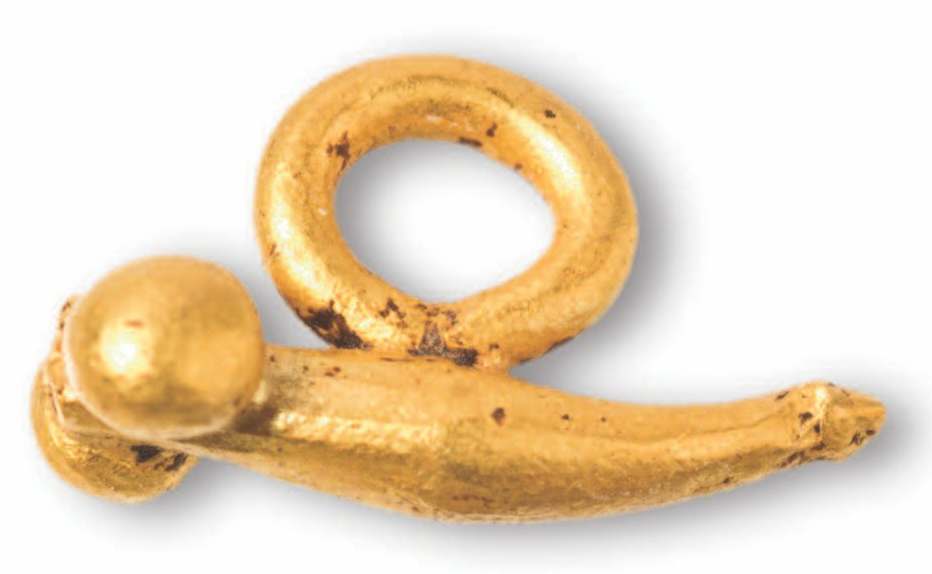
Was the god Priapus present in the old brothels?
In the lobby of these premises stood a statue of the god Priapus with his large erect penis. Thus the visitor was welcomed as a symbol of masculine sexual power. Inside it had a corridor and rooms with beds. It is known that on the ground floor there were normally a maximum of five rooms with a prostitute for each. These cubicles were called “fornices”, a name from which our verb fornicate is born.
The decoration was very important. Along with the God Priapus, the erotic paintings on the wall murals would also have a very clear function: to excite the visitor. The sexual scenes, on the one hand, showed what could be practiced in the Ancient Roman Brothel, and on the other, excited and incited visitors to perform and discover new sexual positions and practices.
The excellent conservation of the city of Pompeii has provided data in this regard, with some 30 buildings related to prostitution. Among them, the Lupanare is the best known and best studied brothel, from which we can learn an example of what the structure of these premises was like.
What were Fornices in Ancient Roman brothels?
At the entrance of each fornices, there were paintings showing the sexual specialties of their prostitutes and a blackboard with their name and their rates, so the client knew very well what he was buying. A “Quadrantary” (quadrantary is called charging a quadrant for sexual services, a pittance) was not the same as a Felatriz, a specialist in fellatio and oral sex, a practice that no worthy woman or man would perform in a normal situation.
There were also posters with the word occupata (Occupied) at the entrances of the fornices, to hang on the door when the prostitute was with a client. Many of the walls were covered with paintings expressing different erotic positions as decoration.
How Were the Beds in Ancient Roman brothels?
The fornices’ beds were made of cement. A straw or down mattress was placed on top of the cement to make the sexual act more comfortable. The only furniture they contained was an oil lamp and a basin for the prostitute’s personal hygiene.
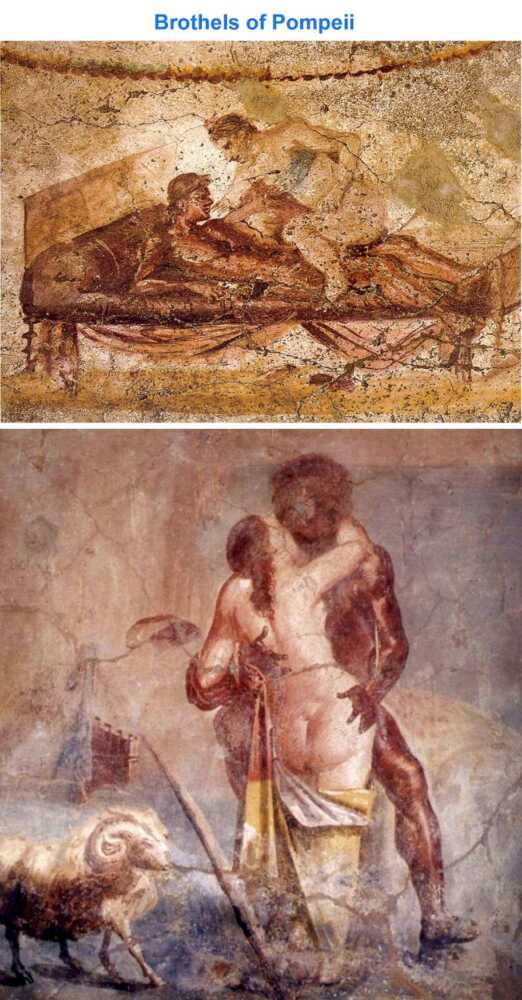
Where were the Ancient Roman Brothels located in Pompeii?
The Ancient Roman Brothels were buildings dedicated to sexual pleasure, normally male. Its architectural profile is the result of the ideological structure of Roman society and the activity that was carried out there. The building was normally located at a street intersection. This was a point of continuous influx of pedestrians and where the Roman prostitutes who walked around it were visible from any street that crosses it. This was to be a major factor in attracting customers.
How did the ancient brothels advertise in Pompeii?
The exhibition of the local offer continued on the balcony. The fact of placing the prostitutes to dance and calling compliments to pedestrians from a balcony, that is, from an elevated stage, implied a greater visuality of the girls. These were more easily visible to would-be patrons, and in turn, they were better able to control what was going on in the surrounding streets.
So much advertising contrasts the point of privacy that the client seeks for the sexual act with the division of space into small rooms. It is true that each cubicle could be dedicated to a different sexual practice, but the reduced space and the possibility of having a door or cloth to cover the entrance denote this desire. In addition, the fact that the space was small and the furniture scarce also implied a precaution against possible attacks on prostitutes. By reducing the space and the objects that could be used as a weapon, aggression and the client’s escape are avoided.
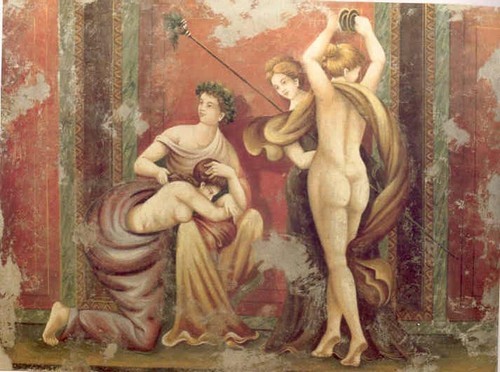
What kind of places were the Ancient Roman Brothels?
Rome’s brothels have been described as dirty, poorly ventilated, foul-smelling places characterized by poor hygiene and the accumulation of soot and fumes from the many lamps. Although there were also the most luxurious venues, perfectly prepared and with great detail.
Depending on the type of neighborhood where the brothel was located, it could be in danger or not. The richest characters would be accompanied by their own escort of slaves armed with lanterns and sticks. As Plautus tells us: “Here we have all categories of men: gentlemen, foot, emancipated, thief, escaped slave, escaped convict, and debt slaves. Prostitutes welcome anyone as long as he has money.”

What was the lobby like in an ancient Roman brothel?
The lobby area, better or worse prepared depending on the economic level of the brothel, could include food and drink services, as Plautus describes it “full of dark corners and cubbyholes. You drink and eat like in taverns. Lined up on shelves along the walls are jars sealed with pitch, with long labels, an indication that this is a place frequented by good drinkers.”
In this area, the prostitutes were shown to clients dressed in gauze or naked, advertising according to their specialty, most with exotic names and probably lying about their place of origin, attributing an origin to some exotic and distant point of the Roman Empire.
Pompeii Sex Sculptures – Cameos
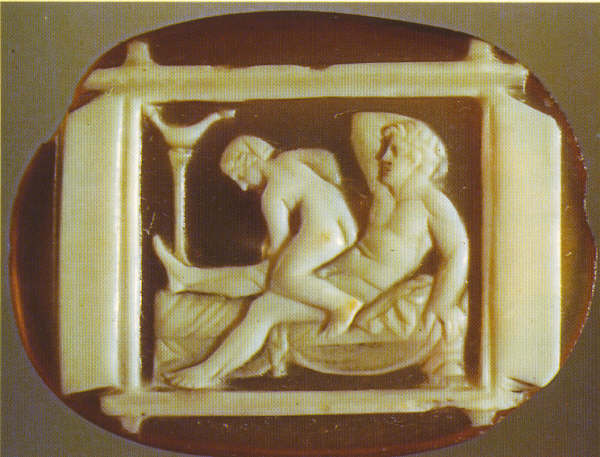
What was the lobby like in an ancient Roman brothel?
The lobby area, better or worse prepared depending on the economic level of the Roman Brothel, could include food and drink services, as Plautus describes it “full of dark corners and cubbyholes. You drink and eat like in taverns. Lined up on shelves along the walls are jars sealed with pitch, with long labels, an indication that this is a place frequented by good drinkers.”
In this area, the prostitutes were shown to clients dressed in gauze or naked, advertising according to their specialty, most with exotic names and probably lying about their place of origin, attributing an origin to some exotic and distant point of the Roman Empire.
The Ancient Roman Brothels and Politics
In short, we see how the brothels of Pompeii were places of reference for pleasure, normally male. Roman politics understood the social need for the existence of this trade, which is why it legislated and regulated all premises and workers related to prostitution. The Roman historian Tacitus described that women who wanted to practice prostitution had to register at the mayor’s office to have the license stupri and thus legally prostitute themselves.
Roman civilization understood prostitution as something normal and everyday. Sex for pleasure, social sex, was regulated and allowed, even spread and accepted as a necessity for the community. Roman society tolerated quite promiscuous and liberal behaviors and ethics, where extramarital relationships were totally normal. The only requirement was to stay within the limits of legal and social regulations.
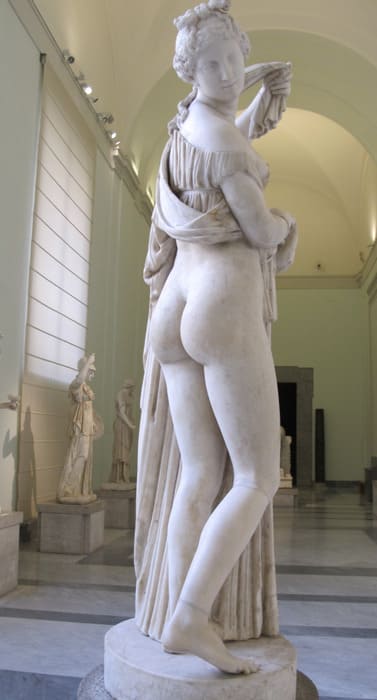
Prostitution in ancient Rome was accessible to all social classes?
Yes. Prostitution in ancient Rome was accessible to all social classes. There were differences in luxuries, prices and prostitutes according to the purchasing power of the clients, that is, we found a stratification of sexual pleasure where the business expands its public, but ranks the services provided.
What was the Greek influence on the ancient Roman brothels?
We must not forget the Greek influence of the primordial search for pleasure, although surely due to inheritance of the rational hedonism of Epicurus, the ancient Romans also understood that everything has its fair measure, even for visits to prostitutes.
A clear example of this Greek morality can be found in an anecdote by Cato the Elder who saw the son of a friend of his come out of a brothel, the latter, ashamed, looked away, although Cato told him “what you do is fine, so when desire your veins swell, you will not abuse decent women.” But the next day he came across the young man who was leaving the brothel again and this time he reproached him saying “Boy, I told you it was okay for you to visit that place, not that you live in it.”
Raffaello Sanzio
The three graces, 1504-1505.
Oil on wood. 17 x 17 cm. Condé Museum, Chantilly
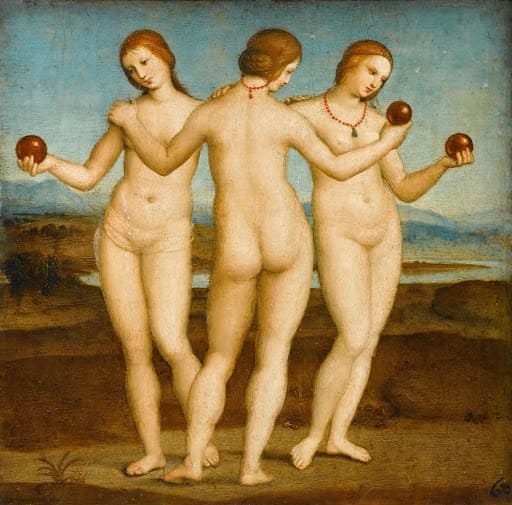
What did the graffiti say on the walls of the old brothels in Pompeii?
More than 120 inscriptions have been documented in Pompeii, which are very reminiscent of those left in any public bath today:
“So I got here, fucked and came back home” (CIL, IV, 2346)
“Festus screwed here with his comrades” (CIL, IV, 3935)
“Haspocras fucked here very comfortably with Drauca for a denarius” (CIL, IV, 2193)
“Whoever writes this is in love; whoever reads it, takes it in the ass; the one who listens, gets hot; who passes by is a fagot; that the bears eat me, and I, who read it, a penis” (CIL, IV, 2360)
“Caius Valerius Venustus, soldier of the first Praetorian cohort, maximum fucker” (CIL, IV, 2145)
“Crisero and Suceso screwed here three times each” (CIL, 4816)
Pompeii Sex Sculptures
Erotic sculptures in Pompeii are few. The one in the previous image is one of the few that have been found. The rest of the erotic sculptures are hand lamps, bells, amulets and cameos.

Pompeii erotic art: Sculptures – Bells
The theme of the Three Graces comes from Greco-Roman antiquity.
Her names in ancient Greece were:
Aglaya (Beauty), Euphrosine (Joy) and Talia (Abundance)
Her names in ancient Rome were:
Cástitas (Chastity), Voluptas (Voluptuousness) and Pulchritudo (Beauty)
Pompeii Volcano Movies
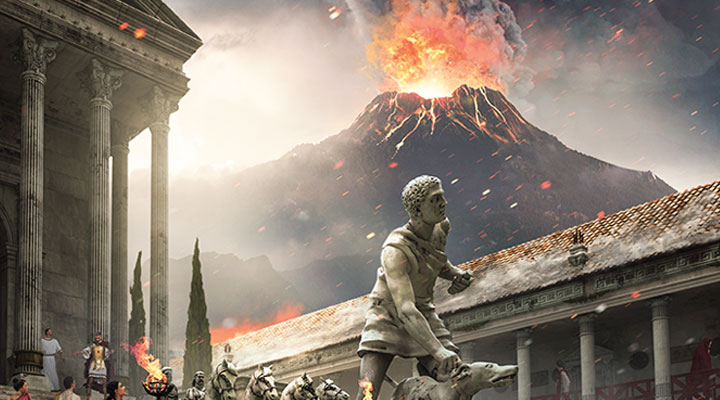
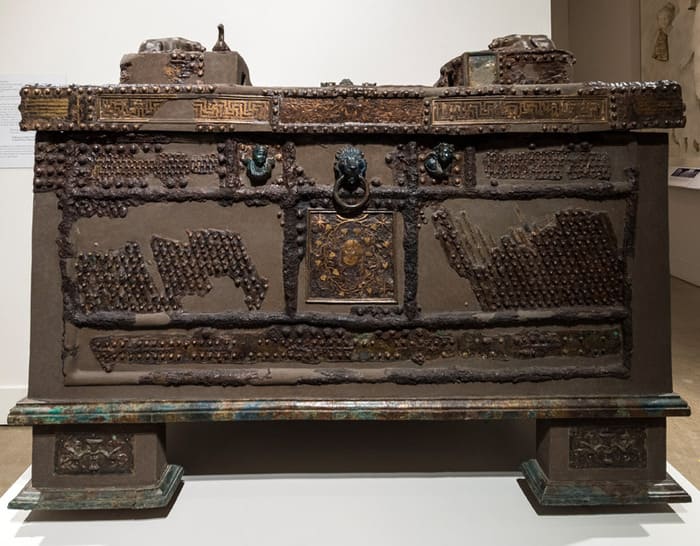
ART AND SENSUALITY IN THE HOUSES OF POMPEII
An exhibition to recount the central position occupied by sensual and erotic images in the domus of Pompeii
LARGE PALAESTRA
FROM 21st APRIL 2022 TO 15th JANUARY 2023
Press preview
21st April at 11:00
(Piazza Anfiteatro Entrance)

The prevalence of sensual and erotic images at Pompeii has astonished archaeologists and visitors ever since the first discoveries were made in 1748. Images of an erotic nature can be found in all areas connected to everyday life throughout the ancient city, including bath complexes, sanctuaries and household rooms. Yet how to explain their central role in the daily life of Pompeii?
The exhibition entitled ‘Art and sensuality in the houses of Pompeii’, which will be open from the 21st April 2022 until the 15th January 2023, in the Large Palaestra of the archaeological site, aims to illustrate and recount the extent and significance of sensual and erotic subjects in the domus and in the daily life of the ancient Pompeians.
Among the 70 works on display, all from the storerooms of the Archaeological Park of Pompeii, the visitor will also find recent discoveries, such as the two bronze medallions with erotic scenes from the Civita Giuliana ceremonial chariot; the elegant ceiling of the cubiculum (bedroom) from the House of Leda and the Swan, which was found collapsed on the floor, before being reassembled and restored; and the three walls from the cubiculum of the Villa of Gragnano in the Carmiano area, which has been reconstructed following a recent restoration.
The exhibition will be completed with an itinerary to discover various buildings on the site which are characterised by frescoes and references to the theme, with the support of an app, while a guide for children will assist youngsters to visit the exhibition and learn about a series of figures central to ancient mythology.
The exhibition will be presented to the press in a special preview on the 21st April at 11:00, by the curators Gabriel Zuchtriegel, Director of the Archaeological Park of Pompeii, and Maria Luisa Catoni, Professor of History and Archaeology of Ancient Art at the IMT School for Advanced Studies, Lucca.
Concluding remarks will be entrusted to Professor Massimo Osanna, Director General of Museums and author, along with Luana Toniolo, of the essay ‘The hidden world of Pompeii: The bride’s chariot, the room of the slaves and recent discoveries’ published by Rizzoli.
The exhibition is sponsored by American Express and by Hotel Caruso A Belmond Hotel Amalfi Coast di Ravello.
Tags;
Pompeii erotic art 2022, Pompeii brothel art, Pompeii brothel murals, Pompeii brothel paintings, erotic paintings 2022, erotic art of Pompeii erotic Pompeii , Pompeii orgy, roman erotic art. Pompeii where is it. Pompeii with lyrics, movies of Pompeii, bodies Pompeii. Volcano on Pompeii, volcanoes of Pompeii. Pompeii volcanoes. The volcano of Pompeii. Oplontis project, Herculano Murals, Herculano brothels, Volcano in Herculano
Related Post
- Pompeii Vettii House
- Travel for Pompeii
- Erotic Draws on MET
- TSA approved ID
-
Pompeii Official site
History of Nude Painting in Art Renaissance Era



















Muy intersante, gracias por compartir
Отлична информативная статья о прекрасной стороне интимной жизни древних Римлян.